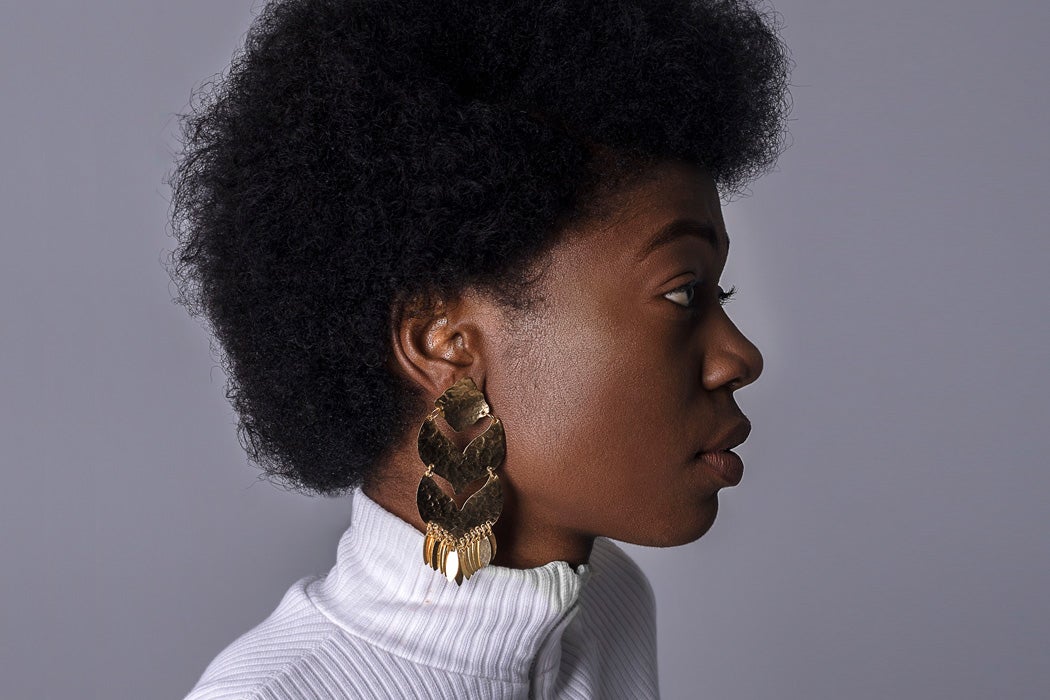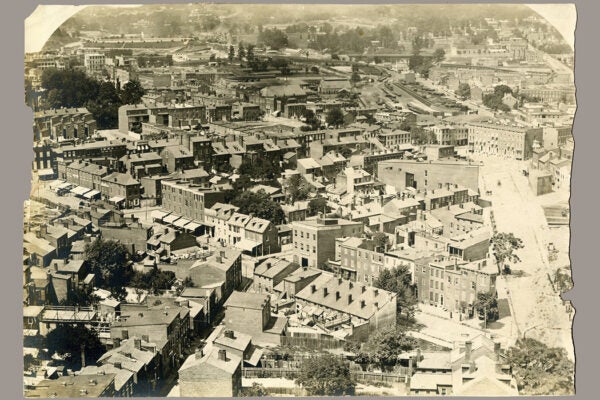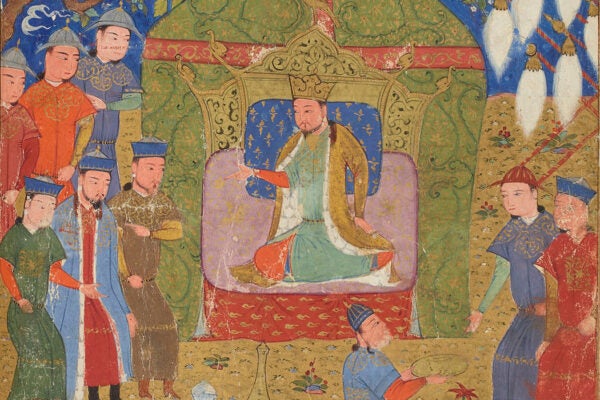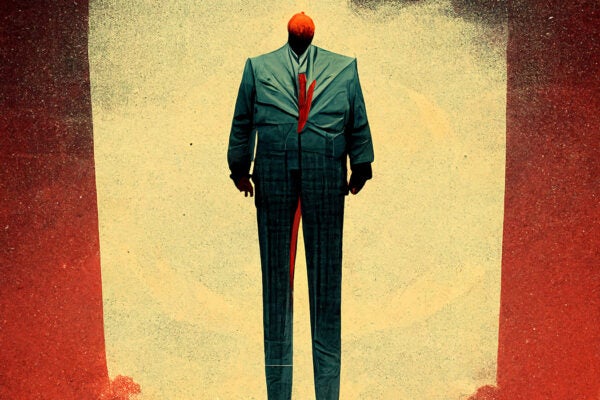In 2010, Chastity Jones eagerly accepted a job offer from Catastrophe Management Solutions as a customer service representative. The offer, however, came with one caveat—she had to cut off her locs. Jones refused, and the company rescinded its job offer. The company’s hiring manager reportedly told Jones, “They tend to get messy.” The Equal Employment Opportunity Commission (EEOC) filed a suit on Jones’s behalf in 2013 and lost. In 2016, the 11th Circuit Court of Appeals upheld the district court’s ruling and dismissed the case.
Jones’ case is not unique. Cases filed by black workers alleging discrimination against their natural hair in the workplace have filled courthouses for more than forty years, yielding mixed results. These judicial rulings, intertwined with changing social and cultural mores, have created a contentious and uncertain legal situation, with courts and other governmental entities ruling on both sides of the debate.
How Did We Get Here?
Anti-black hair sentiment on U.S. soil has existed for centuries. In the 1700s, enslaved women who worked in the fields usually covered their hair in head-rags due to the harsh demands of their work. Enslaved Africans who worked in the “big house,” however, sometimes mimicked the hairstyles of their enslavers, either by wearing wigs that had become popular during that era or shaping their kinky hair to emulate them. In cities like New Orleans, however, where free Creole women of color donned elaborate hairstyles that displayed their kinks and coils with an air of regality, the city implemented laws—the Tignon Laws—that required these women to wear a tignon (scarf or handkerchief) over their hair to signify that they were members of the slave class, regardless of whether they were free or enslaved.
Weekly Digest
The end of the 19th century saw the invention of the hair-straightening comb, which would be used to “tame” black hair. Madam C.J. Walker, a black woman, popularized the comb, and “by the mid-1920s, straight hair had become the preferred texture to signal middle class status.” As a result, Walker became the first female African American millionaire. Although some historians have lauded Walker’s business acumen, others have chided her for perpetuating the idea that straight hair leads to social and economic advancement. For better or worse, she offered black women an avenue for increased societal acceptance in an era when minstrel songs mocked the hair texture of African Americans, “comparing it to wool and often describing it as nappy.”
The first wave of the natural hair movement emerged during the tumultuous 1960s. The “Black Is Beautiful” movement assured black women and men that their skin, facial features, and natural hair were admirable—as is. The activist Marcus Garvey encouraged black women to embrace their natural kinks, arguing that copying white eurocentric standards of beauty denigrated the beauty of black women: “Don’t remove the kinks from your hair! Remove them from your brain!”
The activist Angela Davis sported an afro as a sign of black power and rebellion against white American beauty standards. Wearing an afro became a weapon in the fight for racial equality, as well as a public declaration of self-love and solidarity within the black community. A 1972 study of black teens living in St. Louis revealed that 90 percent of young men and 40 percent of young women in the city sported their natural kinks, an uptick from the 50s and 60s. Although small in scope, this study captured the larger national trend.
Whether rocking afros or pressed hair, black protesters demanded the signing of the Civil Rights Act of 1964, which “ended segregation in public places and banned employment discrimination.” The Act also created the EEOC, which operates “as the lead enforcement agency in the area of workplace discrimination.” When the EEOC was founded fifty-five years ago, the federal government’s primary concern was that black people be granted equal access to public workplaces. It didn’t foresee that black hair would need equal access as well.
Meanwhile, public protests and pop culture pushed the Black Is Beautiful and civil rights movements forward. Released in 1968, James Brown’s “Say It Loud!” became a rallying anthem that encouraged black folks to embrace their blackness and fight against unequal treatment:
Say it loud! I’m black and I’m proud
Say it louder! I’m black and I’m proud
Some people say we got a lot of malice, some say it’s a lotta nerve
But I say we won’t quit movin’ until we get what we deserve
The first natural hair discrimination cases wouldn’t appear until the next decade. In the 1976 case of Jenkins v. Blue Cross Mutual Hospital Insurance, the U.S. Court of Appeals for the Seventh Circuit upheld a race discrimination lawsuit against an employer for bias against afros. The appeals court agreed that workers were entitled to wear afros under Title VII of the Civil Rights Act.
While afros were technically allowed in workplaces, the social pressure to emulate eurocentric hair permeated American society, impacting black women’s hair grooming decisions. In “Hey Girl, Am I More Than My Hair?,” the communications scholar Tracey Owens Patton wrote that “the progressive changes made during the Black Power movement eroded as assimilation became more dominant in the late 1970s and throughout the 1980s.”

The 1980s and 1990s ushered in more black women sporting pressed and permed hair, thanks to prevalent hair-care ads on TV and in magazines that encouraged black women to alter the texture of their hair. However, this time period also witnessed the popularization of styles like braids and cornrows. Images of black women celebrities showcasing braids—like Janet Jackson in Poetic Justice—encouraged black women to braid their tresses. Wearing these styles came with a price, as they created a legal firestorm. In 1981, a black woman took American Airlines to court because the company demanded she not wear her hair in braids. The court sided with the airline, stating that braids were not an immutable racial characteristic—unlike the afro. Less than a decade later, the Hyatt Regency used this ruling to make employee Cheryl Tatum resign after she refused to take out the cornrows she wore to work. The American Airlines ruling established the standing legal precedent.
Finally, the 2000s welcomed the second wave of the natural hair movement. Spurred by films and the advent of social media, the movement fueled a cultural shift that has caused legions of black women to abandon their perms and pressing combs. Director Regina Kimbell’s My Nappy Roots: A Journey Through Black Hair-itage traced the history and politics around natural black hair in the U.S., thus raising consciousness in the African American community. This was one year before comedian Chris Rock would release Good Hair, a similarly themed documentary that focused on the economics of black women buying weaves and perming their hair. One of the most famous lines of the film was delivered by comedian Paul Mooney, who said, “If your hair is relaxed, they are relaxed. If your hair is nappy, they are not happy.”
While both films raised social consciousness, prompting many black women to ditch their pressing combs, perms, and weaves, YouTube and other social media platforms empowered these women to act on their new awareness. YouTube and natural hair blogs allowed black women to discuss their hair-care journeys, share hair tutorials, and connect with other women—many of whom were learning to care for their natural hair for the first time. In “YouTube Communities and the Promotion of Natural Hair Acceptance Among Black Women,” Cameron Jackson wrote that the social media platform not only enabled newly minted naturalistas to “disseminate information about natural hair” but also caused “a shift in the cultural understanding of natural hair.”

Today, natural hair communities abound on YouTube and Instagram. With one million subscribers, Naptural85 is an acclaimed natural hair guru, while Instagram shows 21.8 million “natural hair” posts. These numbers suggest that natural hair is officially “in.” So “in” that natural hair clip-ins are now available, offering buyers an assortment of “natural” kinks and curls. Hair product sales stats reflect this trend. According to the global research firm Mintel, spending on perm relaxers fell 30.8 percent between 2011 and 2016. Estimates suggest that by 2020, relaxers will become the smallest segment of the market.
Preferring natural crowns isn’t a passing fad, writes Kamina Wilkerson in “The Natural Hair Movement:” “It signifies an attempt at a healthier lifestyle, a more authentic existence and a redefinition of the meaning of beauty.” According to Wilkerson, it’s also “revolutionary as a self-created, self-perpetuating female-led movement.” The proliferation of natural hair expos and festivals exemplifies this reality. The leaders of this revolution are natural hair evangelists who preach the good news of organic hair products to their loyal followers and the newly converted—while flaunting fierce manes, the same hairstyles worn in countries in Africa in the seventeenth century.
As natural hair care practices have gained increased acceptance in mainstream society, many corporations—and the U.S. government—have welcomed natural styles, even as courts decided they didn’t have to. Last year, for example, the U.S. Navy changed its grooming policy to include braided styles and locs, which follows a similar decision by the Army in 2017.
However, the debate about what’s professional, presentable, and thus acceptable looms, affecting black children as well. In 2017, a preparatory academy in Montverde, Florida, asked a black teenage girl to change her natural hair because it violated the school’s dress code; and in 2018, a middle-school student in Gretna, Louisiana was removed from school due to her braided extensions.
Undeterred, artists continue to propel the culture forward. In 2018, Netflix turned Trisha R. Thomas’s Nappily Ever After book series into a film, while Gillian Scott-Ward’s Back to Natural documentary (which hit the festival circuit in 2017) influenced the NYC Commission’s release of its groundbreaking guidelines.
Where Are We at Now?
In 2006, the EEOC issued its Compliance Manual on Race and Color Discrimination, which details guidelines around what constitutes discrimination based on physical characteristics in the workplace. The manual protects against “employment discrimination based on a person’s physical characteristics associated with race, such as a person’s color, hair, facial features, height and weight.” The manual states that employers can impose neatness and grooming standards, as long as racial differences are taken into account and the rules are applied equally across racial lines. Employers cannot discriminate against an employee wearing an afro, for example, because that is black hair in its natural state. While employers might be able to request that an afro be groomed, they cannot demand that it not be worn at all. Neither can they apply hairstyle rules more stringently to hairstyles worn by blacks.
The EEOC’s guidelines, however clear, still leave room for judicial interpretation, with the EEOC and federal courts disagreeing. At the center of the current debate around natural hairstyles like locs is whether the style is a racial characteristic protected by the law.
In Jones’ case, the Eleventh Circuit held that the employer did not discriminate against Jones based on race because the locs hairstyle is a “mutable—or changeable—characteristic.” The EEOC, however, maintained that race is a social construct that isn’t strictly limited to immutable characteristics. The Commission insists that race can also include “cultural characteristics related to race or ethnicity,” including grooming practices. The circuit court disagreed, ruling that although locs are traditionally associated with people of African descent, the employer did not engage in any race-based disparate treatment.
Although the EEOC opted not to take the case to the Supreme Court and the NAACP’s subsequent request that the court hear the case was rejected, other government entities have drawn more stringent legal lines in the sand. In early 2019, the New York City Commission on Human Rights declared its commitment to protect residents’ legal right to wear their hair in locs, afros, braids, and other culturally specific styles, granting the city’s residents more protection than the federal government provides. The Commission argues that natural hair—and by extension any natural hairstyle—is inextricably tied to race and thus protected under Title VII of the Civil Rights Act, which “prohibits employment discrimination based on race, color, religion, sex and national origin.”
The Commission wrote: “Bans or restrictions on natural hair or hairstyles associated with black people are often rooted in white standards of appearance and perpetuate racist stereotypes that black hairstyles are unprofessional. Such policies exacerbate anti-black bias in employment, at school, while playing sports, and in other areas of daily living.” The Commission’s statement mirrored the EEOC’s position and implemented on the local level what the EEOC hopes to implement on a federal level.
Two months after NYC released its guidelines, the California legislature passed a bill that would ban discrimination against natural black hairstyles in the workplace. The bill awaits the Governor’s signature. If it’s approved, California would become the first state to ban discrimination against all natural hairstyles in the workplace.
Where Do We Go from Here?
While NYC residents can don any natural hairstyle they want in public schools and in workplaces, and California residents may soon join them, many African Americans aren’t afforded that same legal protection. Black citizens like Chastity Jones are still being denied jobs. Unless the Supreme Court reverses the Eleventh Circuit’s ruling, this judicial and legislative free-for-all will continue. Caught in the crosshairs, many African Americans will be forced to choose between embracing their identities and economic advancement.







